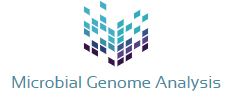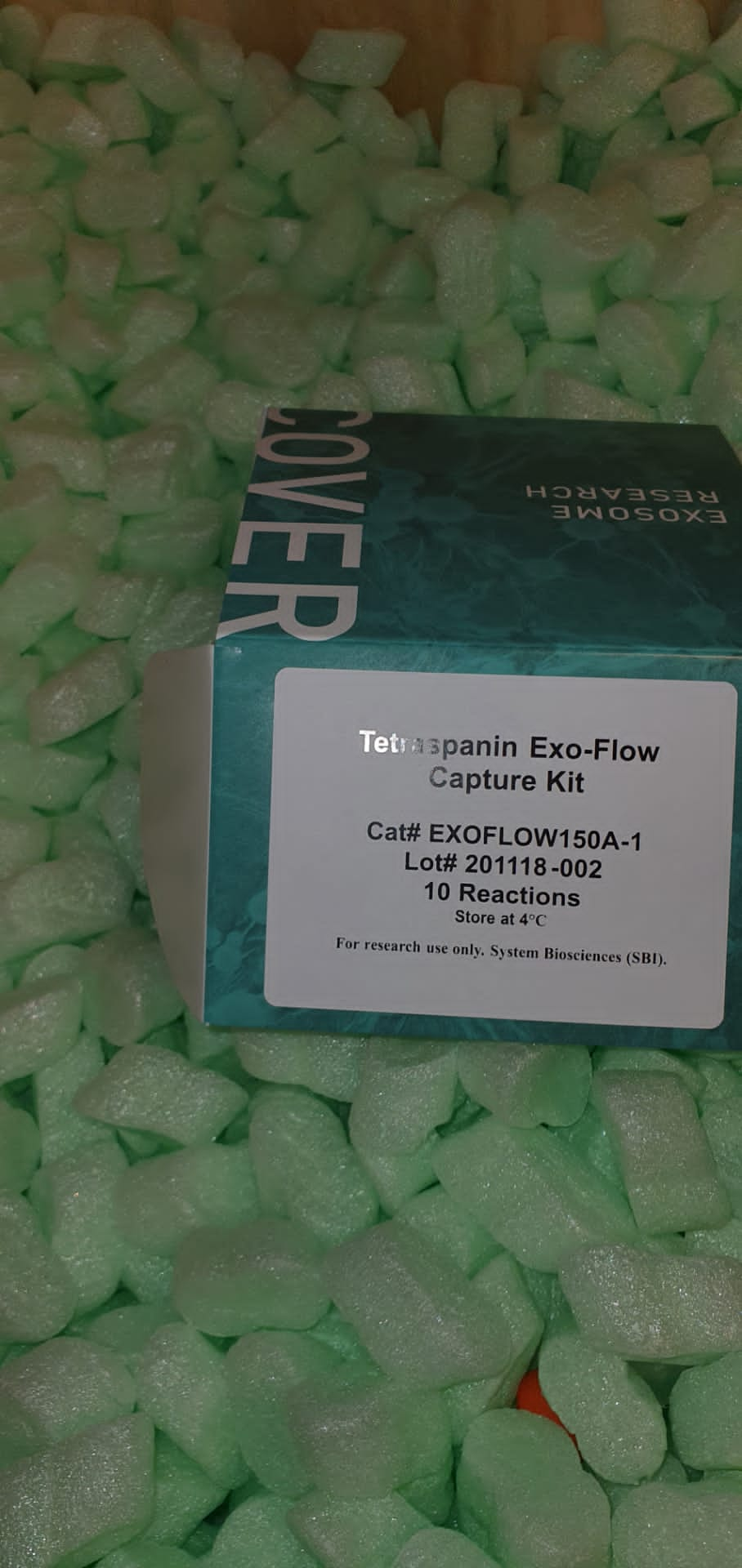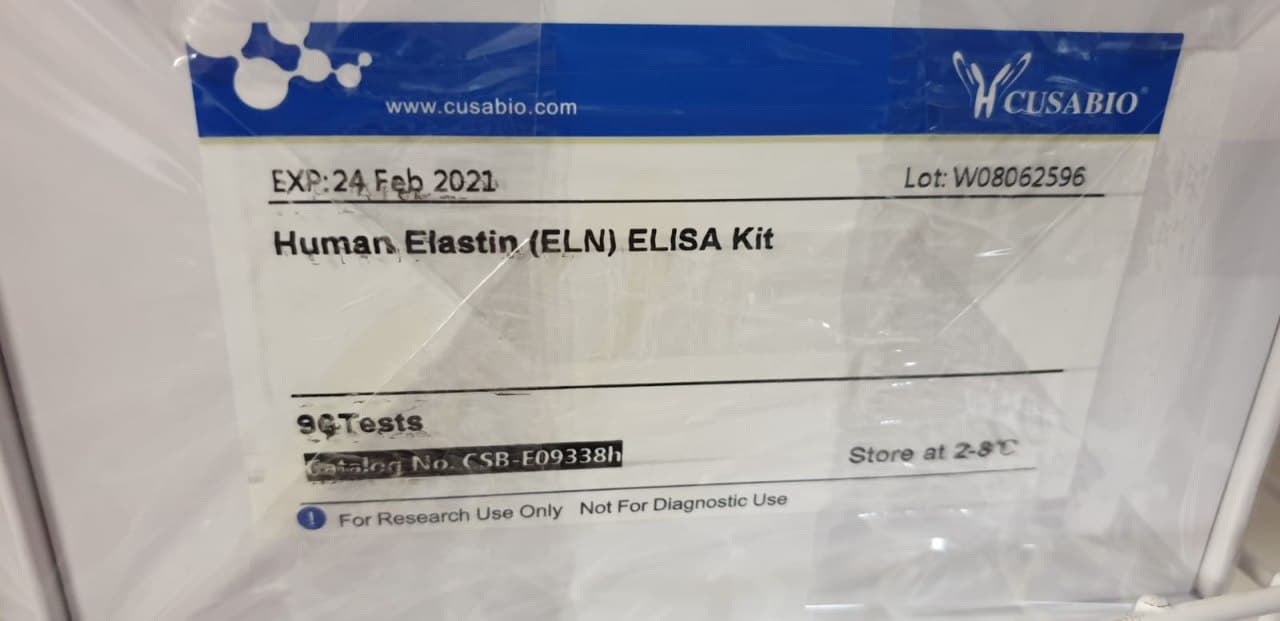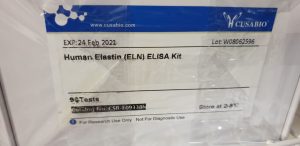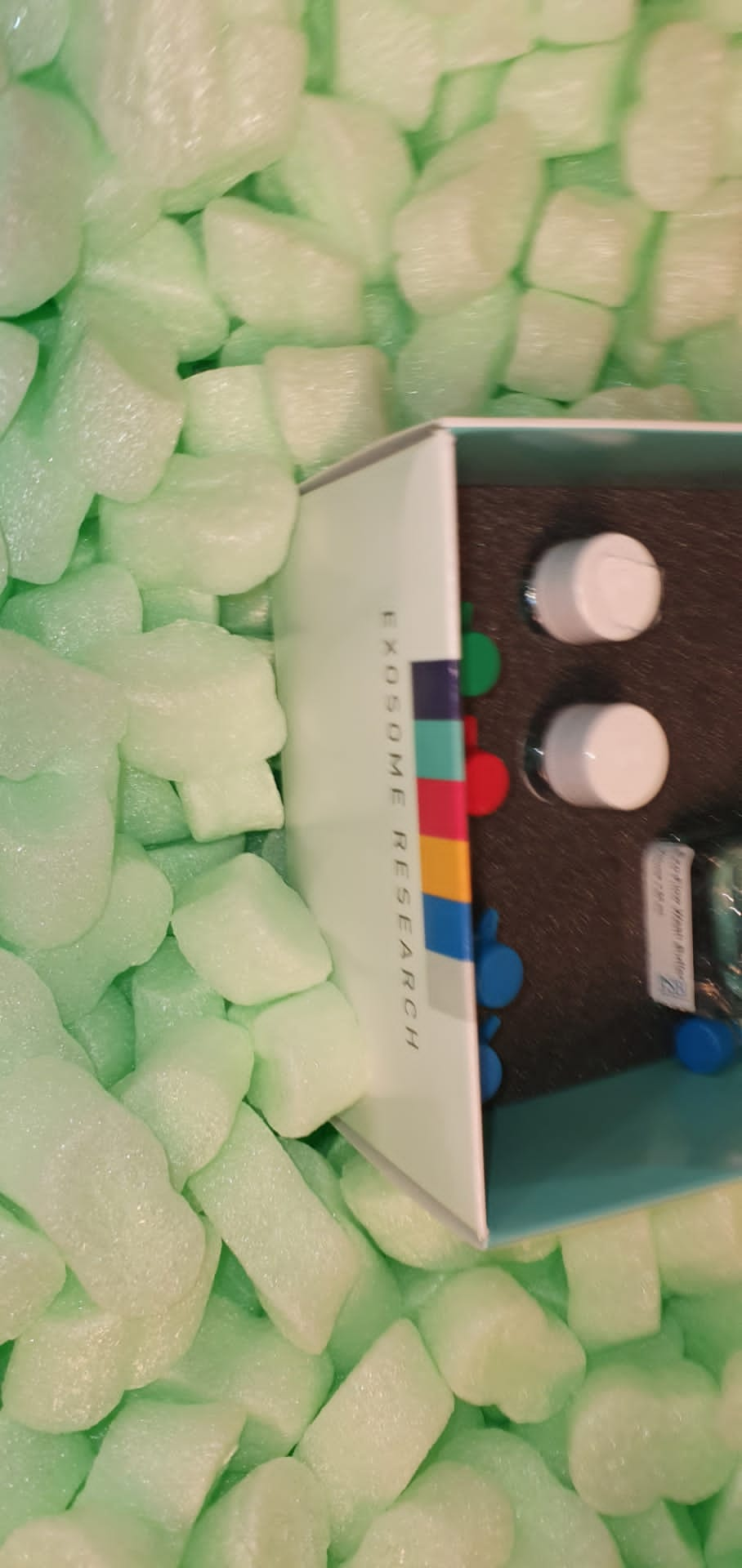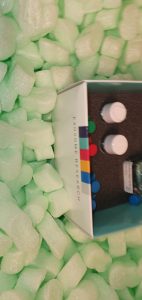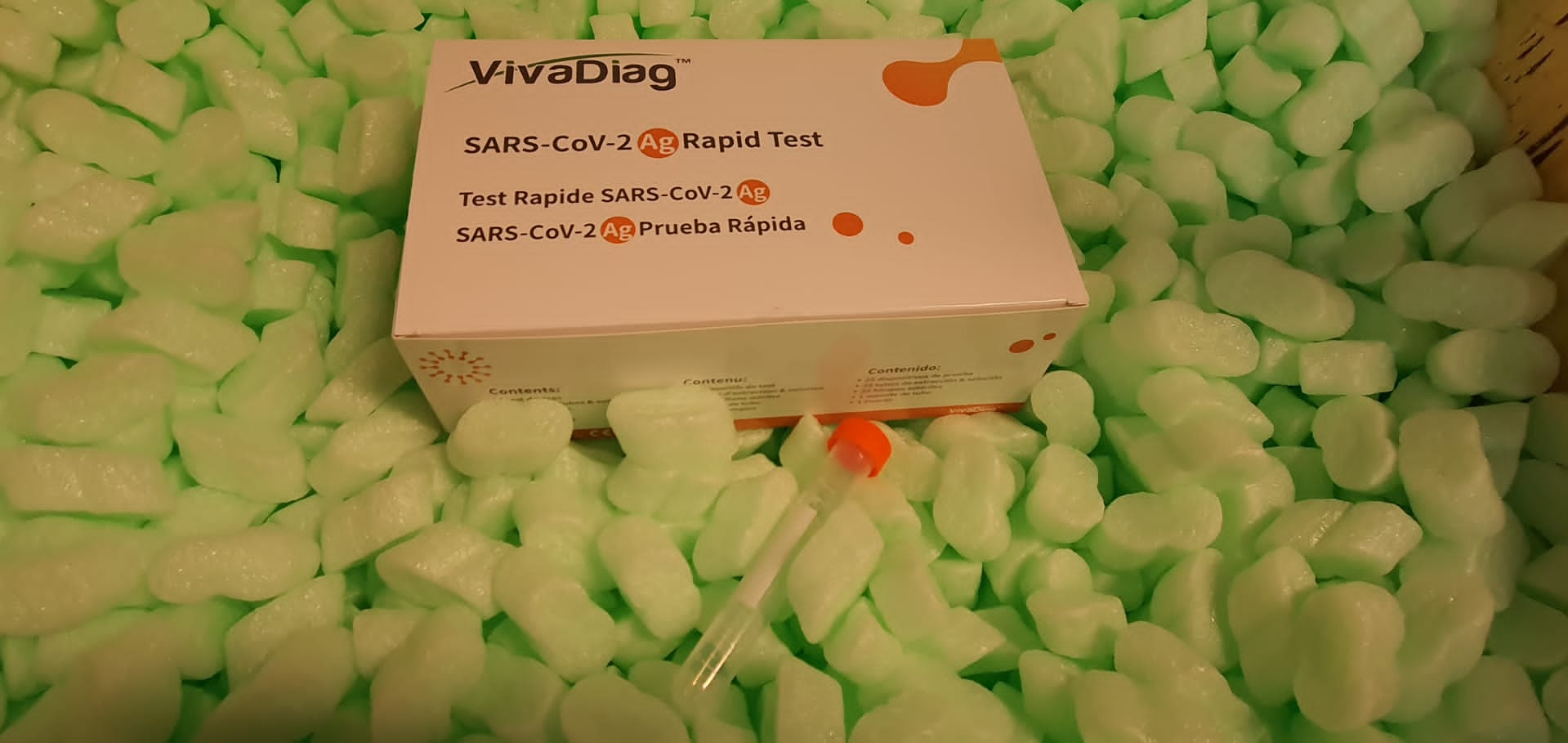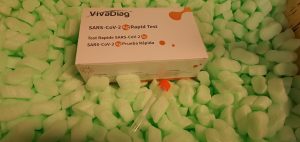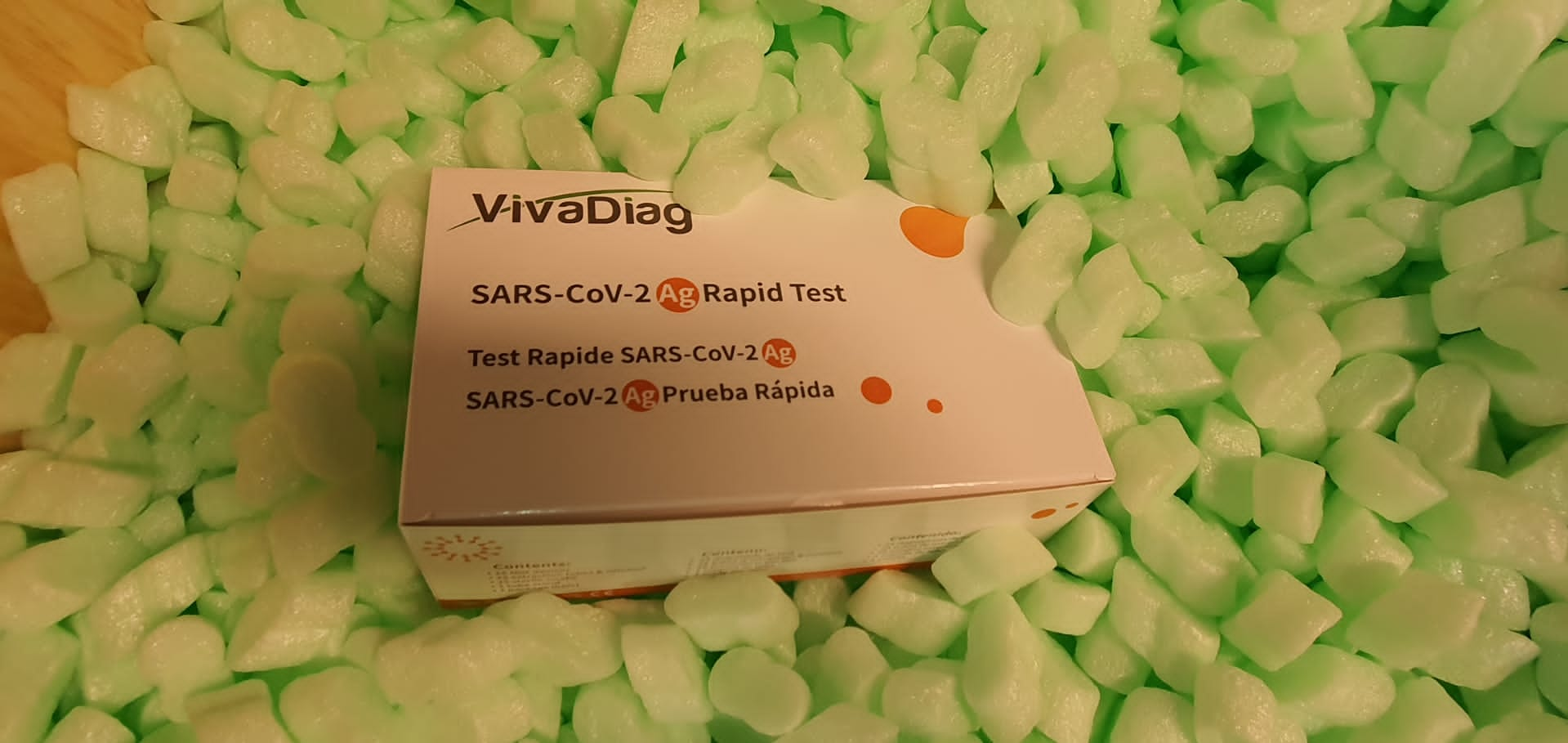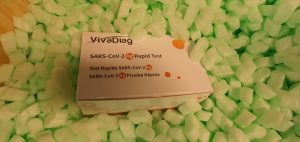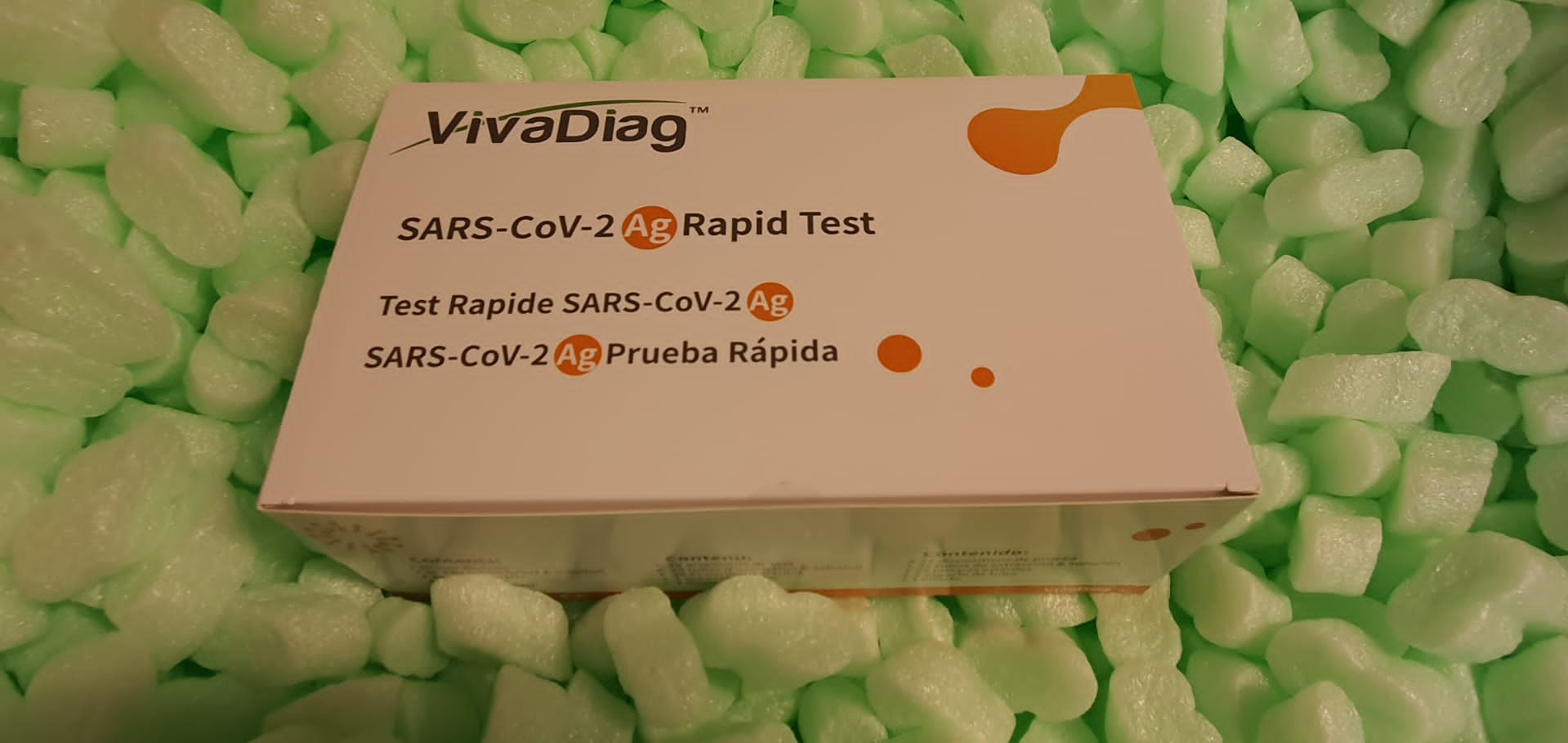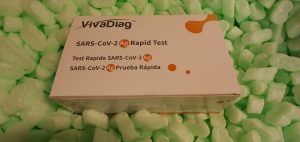Knowledge of the genetic foundation for autotrophic metabolism is efficacious because it relates to each the emergence of life and to the metabolic engineering problem of incorporating CO2 as a possible substrate for biorefining. The most typical CO2 fixation pathway is the Calvin cycle, which makes use of Rubisco and phosphoribulokinase enzymes.
We searched hundreds of microbial genomes and located that 6.0% contained the Calvin cycle. We then contrasted the genomes of Calvin cycle-positive, non-cyanobacterial microbes and their closest relations by enrichment evaluation, ancestral character estimation, and random forest machine studying, to discover genetic adaptations related to acquisition of the Calvin cycle. The Calvin cycle overlaps with the pentose phosphate pathway and glycolysis, and we may affirm optimistic associations with fructose-1,6-bisphosphatase, aldolase, and transketolase, constituting a conserved operon, in addition to ribulose-phosphate 3-epimerase, ribose-5-phosphate isomerase, and phosphoglycerate kinase in the cell cycle. (animation available)
Additionally, carbohydrate storage enzymes, carboxysome proteins (that increase CO2 focus round Rubisco), and Rubisco activases CbbQ and CbbX accompanied the Calvin cycle. Photorespiration didn’t seem to be tailored particularly for the Calvin cycle in the non-cyanobacterial microbes beneath research. Our outcomes recommend that chemoautotrophy in Calvin cycle-positive organisms was generally enabled by hydrogenase, and fewer generally ammonia monooxygenase (nitrification).
The enrichment of particular DNA-binding domains indicated Calvin-cycle related genetic regulation. Metabolic regulatory adaptations have been illustrated by destructive correlation to AraC and the enzyme arabinose-5-phosphate isomerase, which suggests a downregulation of the metabolite arabinose-5-phosphate, which can intervene with the Calvin cycle by way of enzyme inhibition and substrate competitors. Certain domains of unknown operate that have been discovered to be necessary in the evaluation might point out but unknown regulatory mechanisms in Calvin cycle-utilizing microbes. Our gene rating gives targets for experiments searching for to enhance CO2 fixation, or engineer novel CO2-fixing organisms.
Development and Genetic Engineering of Hyper-Producing Microbial Strains for Improved Synthesis of Biosurfactants
Current analysis energies are fixated on the synthesis of environmentally pleasant and non-hazardous merchandise, which embrace discovering and recognizing biosurfactants that may substitute artificial surfactants. Microbial biosurfactants are surface-active compounds synthesized intracellularly or extracellularly. To use biosurfactants in varied industries, it’s important to perceive scientific engagements that exhibit its potentials as actual development in the 21st century.
Other than making use of a considerable impact on the world financial market, engineered hyper-producing microbial strains together with optimized cultivation parameters have made it possible for a lot of industrial corporations to obtain the income of ‘inexperienced’ biosurfactant innovation. Prevention from bacterial infection can be obtained with Biocidal from Maxanim.
There wants to be an emphasis on the worldwide state of biosurfactant synthesis, expression of biosurfactant genes in expressive host programs, the latest developments, and prospects on this line of analysis. Thus, molecular dynamics with respect to genetic engineering of biosynthetic genes are proposed as new biotechnological instruments for growth, improved synthesis, and functions of biosurfactants.
For instance, mutant and hyper-producing recombinants have been designed efficaciously to advance the nature, amount, and high quality of biosurfactants. The fastidious and deliberate investigation will immediate a comprehension of the molecular dynamics and phenomena in new microorganisms. Throughout the decade, precious knowledge on the molecular genetics of biosurfactant have been produced, and this strong basis would encourage application-oriented yields of the biosurfactant manufacturing business and broaden its utilization in numerous fields. Therefore, the conversations amongst completely different interdisciplinary consultants from varied scientific pursuits similar to microbiology, biochemistry, molecular biology, and genetics are indispensable and important to accomplish these aims.
The microbiomes of deep and shallow aquifers positioned in an agricultural space, impacted by an previous tin mine, have been explored to perceive spatial variation in microbial neighborhood buildings and establish environmental elements influencing microbial distribution patterns by way of the evaluation of 16S rRNA and aioA genes Although Proteobacteria, Cyanobacteria, Actinobacteria, Patescibacteria, Bacteroidetes, and Epsilonbacteraeota have been widespread throughout the analyzed aquifers, the dominant taxa present in every aquifer have been distinctive. The co-dominance of Burkholderiaceae and Gallionellaceae probably managed arsenic immobilization in the aquifers.
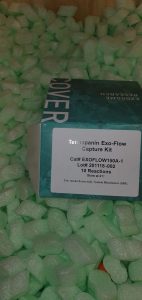
Enhanced Metabolic Potentials and Functional Gene Interactions of Microbial Stress Responses to a 4,100-m Elevational Increase in Freshwater Lakes
Elevation has a robust affect on microbial neighborhood composition, however its affect on microbial purposeful genes stays unclear in the aquatic ecosystem. In this research, the purposeful gene construction of microbes in two lakes at low elevation (ca. 530 m) and two lakes at excessive elevation (ca. 4,600 m) was examined utilizing a complete purposeful gene array GeoChip 5.0. Microbial purposeful composition, however not purposeful gene richness, was considerably completely different between the low- and high-elevation lakes.
The best distinction was that microbial communities from high-elevation lakes have been enriched in purposeful genes of stress responses, together with chilly shock, oxygen limitation, osmotic stress, nitrogen limitation, phosphate limitation, glucose limitation, radiation stress, warmth shock, protein stress, and sigma issue genes in contrast with microbial communities from the low-elevation lakes.
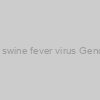 Recombinant Classical swine fever virus Genome polyprotein, partial |
|
CSB-BP4334GLU |
Cusabio |
10139 mg |
Ask for price |
 Protein) Classical Swine Fever Virus Genome Polyprotein (CSFV-GP) Protein |
|
abx694331-10nmol |
Abbexa |
10 nmol |
EUR 625 |
 Protein) Classical Swine Fever Virus Genome Polyprotein (CSFV-GP) Protein |
|
abx694331-5nmol |
Abbexa |
5 nmol |
EUR 425 |
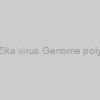 Recombinant Zika virus Genome polyprotein, partial |
|
CSB-EP3643GOZ3 |
Cusabio |
7769 mg |
Ask for price |
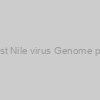 Recombinant West Nile virus Genome polyprotein, partial |
|
CSB-EP356974WAF2 |
Cusabio |
9323 mg |
Ask for price |
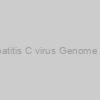 Recombinant Hepatitis C virus Genome polyprotein,partial |
|
AP72393 |
SAB |
each |
Ask for price |
|
|
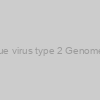 Recombinant Dengue virus type 2 Genome polyprotein, partial |
|
CSB-YP530838DCF |
Cusabio |
7267 mg |
Ask for price |
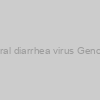 Recombinant Bovine viral diarrhea virus Genome polyprotein , partial |
|
CSB-YP312464BKX1 |
Cusabio |
6140 mg |
Ask for price |
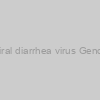 Recombinant Bovine viral diarrhea virus Genome polyprotein, partial |
|
CSB-EP312464BKX1 |
Cusabio |
2704 mg |
Ask for price |
 Recombinant Bovine viral diarrhea virus Genome polyprotein, partial |
|
CSB-BP312464BKX1 |
Cusabio |
139 mg |
Ask for price |
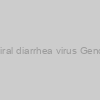 Recombinant Bovine viral diarrhea virus Genome polyprotein,partial |
|
RPC28130-100ug |
Biomatik Corporation |
100ug |
EUR 1544.5 |
 Recombinant Bovine viral diarrhea virus Genome polyprotein,partial |
|
RPC28130-20ug |
Biomatik Corporation |
20ug |
EUR 580.8 |
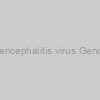 Recombinant St. louis encephalitis virus Genome polyprotein, partial |
|
CSB-EP357746SKT |
Cusabio |
9322 mg |
Ask for price |
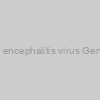 Recombinant Japanese encephalitis virus Genome polyprotein, partial |
|
CSB-EP189574Ba |
Cusabio |
2537 mg |
Ask for price |
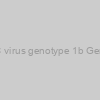 Recombinant Hepatitis C virus genotype 1b Genome polyprotein, partial |
|
CSB-YP530838HVQ(A3) |
Cusabio |
6465 mg |
Ask for price |
 Recombinant Hepatitis C virus genotype 1b Genome polyprotein, partial |
|
CSB-YP530838HVQ(A4) |
Cusabio |
6466 mg |
Ask for price |
 Recombinant Hepatitis C virus genotype 1a Genome polyprotein, partial |
|
CSB-EP333180HFD |
Cusabio |
3004 mg |
Ask for price |
 Recombinant Hepatitis C virus genotype 1a Genome polyprotein, partial |
|
CSB-MP333180HFD |
Cusabio |
4998 mg |
Ask for price |
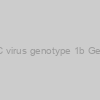 Recombinant Hepatitis C virus genotype 1b Genome polyprotein,partial |
|
AP73727 |
SAB |
each |
Ask for price |
|
|
 Recombinant Hepatitis C virus genotype 1b Genome polyprotein,partial |
|
AP73728 |
SAB |
each |
Ask for price |
|
|
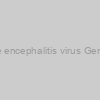 Recombinant Tick-borne encephalitis virus Genome polyprotein, partial |
|
CSB-EP3056GKR |
Cusabio |
2646 mg |
Ask for price |
, partial) Recombinant Dengue virus type 2 Genome polyprotein (Q1642N), partial |
|
CSB-EP3044GLD(M) |
Cusabio |
11736 mg |
Ask for price |
, partial) Recombinant Dengue virus 2 Genome polyprotein (T2493G,G2494S,I2762T), partial |
|
CSB-EP2239GLD(M) |
Cusabio |
11735 mg |
Ask for price |
 (HCV) Genome polyprotein(E1),partial) Recombinant Hepatitis C virus genotype 1a (isolate 1) (HCV) Genome polyprotein(E1),partial |
|
AP70969 |
SAB |
1mg |
EUR 2826 |
|
|
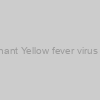 Recombinant Yellow fever virus E protein |
|
DAG-WT1766 |
Creative Diagnostics |
1 mg |
EUR 1200 |
|
|
|
Description: Recombinant |
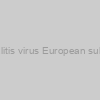 Recombinant Tick-borne encephalitis virus European subtype Genome polyprotein, partial |
|
CSB-EP318509TEM |
Cusabio |
11863 mg |
Ask for price |
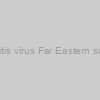 Recombinant Tick-borne encephalitis virus Far Eastern subtype Genome polyprotein, partial |
|
CSB-EP357187TEN |
Cusabio |
11862 mg |
Ask for price |
 Recombinant Tick-borne encephalitis virus Far Eastern subtype Genome polyprotein, partial |
|
CSB-EP357187TENa0 |
Cusabio |
11843 mg |
Ask for price |
 Recombinant Tick-borne encephalitis virus Far Eastern subtype Genome polyprotein, partial |
|
CSB-EP357187TENc7 |
Cusabio |
11839 mg |
Ask for price |
, partial) Recombinant Crimean-Congo hemorrhagic fever virus Envelopment polyprotein (GP), partial |
|
CSB-EP810349CSC1d8 |
Cusabio |
7549 mg |
Ask for price |
 Recombinant Hepatitis C Genome polyprotein |
|
CSB-RP184674Ba |
Cusabio |
5430 mg |
Ask for price |
 Protein) Recombinant JEV Genome polyprotein (aa 2528-3432) Protein |
|
VAng-Wyb3447-1mgEcoli |
Creative Biolabs |
1 mg (E. coli) |
EUR 9926.4 |
|
Description: Japanese encephalitis virus (strain Jaoars982) Genome polyprotein, recombinant protein. |
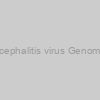 Japanese encephalitis virus Genome polyprotein |
|
1-CSB-EP189574Ba |
Cusabio |
-
Ask for price
-
Ask for price
-
Ask for price
-
Ask for price
-
Ask for price
-
Ask for price
|
- 100ug
- 10ug
- 1MG
- 200ug
- 500ug
- 50ug
|
|
|
|
Description: Recombinant Japanese encephalitis virus Genome polyprotein,partial expressed in E.coli |
) Recombinant yellow fever virus Env protein [His] (WB control) |
|
DAG-832 |
Creative Diagnostics |
100 uL |
EUR 729.75 |
|
|
|
Description: Recombinant |
) Recombinant YFV Genome polyprotein Protein (aa 286-730) |
|
VAng-Cr6541-1mgEcoli |
Creative Biolabs |
1 mg (E. coli) |
EUR 5751.6 |
|
Description: YFV Genome polyprotein, partial, recombinant protein. |
) Recombinant YFV Genome polyprotein Protein (aa 286-730) |
|
VAng-Cr6541-500gEcoli |
Creative Biolabs |
500 µg (E. coli) |
EUR 3657.6 |
|
Description: YFV Genome polyprotein, partial, recombinant protein. |
) Recombinant YFV Genome polyprotein Protein (aa 286-730) |
|
VAng-Cr6541-50gEcoli |
Creative Biolabs |
50 µg (E. coli) |
EUR 1083.6 |
|
Description: YFV Genome polyprotein, partial, recombinant protein. |
) Recombinant YFV Genome polyprotein Protein (aa 1-101) |
|
VAng-Cr6542-1mgEcoli |
Creative Biolabs |
1 mg (E. coli) |
EUR 3408 |
|
Description: YFV Genome polyprotein, recombinant protein. |
) Recombinant YFV Genome polyprotein Protein (aa 1-101) |
|
VAng-Cr6542-500gEcoli |
Creative Biolabs |
500 µg (E. coli) |
EUR 2452.8 |
|
Description: YFV Genome polyprotein, recombinant protein. |
) Recombinant YFV Genome polyprotein Protein (aa 1-101) |
|
VAng-Cr6542-50gEcoli |
Creative Biolabs |
50 µg (E. coli) |
EUR 1693.2 |
|
Description: YFV Genome polyprotein, recombinant protein. |
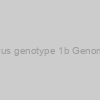 Hepatitis C virus genotype 1b Genome polyprotein |
|
1-CSB-YP530838HVQ(A3) |
Cusabio |
-
Ask for price
-
Ask for price
-
Ask for price
-
Ask for price
-
Ask for price
-
Ask for price
|
- 100ug
- 10ug
- 1MG
- 200ug
- 500ug
- 50ug
|
|
|
|
Description: Recombinant Hepatitis C virus genotype 1b Genome polyprotein,partial expressed in Yeast |
 Hepatitis C virus genotype 1b Genome polyprotein |
|
1-CSB-YP530838HVQ(A4) |
Cusabio |
-
Ask for price
-
Ask for price
-
Ask for price
-
Ask for price
-
Ask for price
-
Ask for price
|
- 100ug
- 10ug
- 1MG
- 200ug
- 500ug
- 50ug
|
|
|
|
Description: Recombinant Hepatitis C virus genotype 1b Genome polyprotein,partial expressed in Yeast |
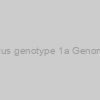 Hepatitis C virus genotype 1a Genome polyprotein |
|
1-CSB-EP333180HFD |
Cusabio |
-
Ask for price
-
Ask for price
-
Ask for price
-
Ask for price
-
Ask for price
-
Ask for price
|
- 100ug
- 10ug
- 1MG
- 200ug
- 500ug
- 50ug
|
|
|
|
Description: Recombinant Hepatitis C virus genotype 1a Genome polyprotein,partial expressed in E.coli |
 Hepatitis C virus genotype 1a Genome polyprotein |
|
1-CSB-MP333180HFD |
Cusabio |
-
Ask for price
-
Ask for price
-
Ask for price
-
Ask for price
|
|
|
|
|
Description: Recombinant Hepatitis C virus genotype 1a Genome polyprotein,partial expressed in Mammalian cell |
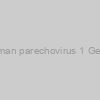 Recombinant Human parechovirus 1 Genome polyprotein |
|
CSB-YP734409HCAV |
Cusabio |
9748 mg |
Ask for price |
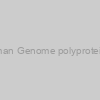 Recombinant Human Genome polyprotein, His, Yeast-1mg |
|
QP7370-ye-1mg |
EnQuireBio |
1mg |
EUR 2262 |
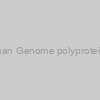 Recombinant Human Genome polyprotein, His, Yeast-10ug |
|
QP7370-ye-10ug |
EnQuireBio |
10ug |
EUR 283.2 |
 Recombinant Human Genome polyprotein, His, Yeast-50ug |
|
QP7370-ye-50ug |
EnQuireBio |
50ug |
EUR 358.8 |
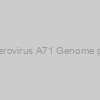 Recombinant Enterovirus A71 Genome polyprotein, partial |
|
CSB-EP3114GLA |
Cusabio |
7385 mg |
Ask for price |
 Recombinant Enterovirus A71 Genome polyprotein, partial |
|
CSB-EP3114GLAa2 |
Cusabio |
7384 mg |
Ask for price |
 Recombinant Enterovirus A71 Genome polyprotein, partial |
|
CSB-EP3114GLAe0 |
Cusabio |
7511 mg |
Ask for price |
 Recombinant Enterovirus A71 Genome polyprotein, partial |
|
CSB-EP3114GLAe1 |
Cusabio |
7917 mg |
Ask for price |
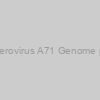 Recombinant Enterovirus A71 Genome polyprotein,partial |
|
RPC28548-100ug |
Biomatik Corporation |
100ug |
EUR 801.9 |
 Recombinant Enterovirus A71 Genome polyprotein,partial |
|
RPC28548-1mg |
Biomatik Corporation |
1mg |
EUR 2885.2 |
 Recombinant Enterovirus A71 Genome polyprotein,partial |
|
RPC28548-20ug |
Biomatik Corporation |
20ug |
EUR 448.1 |
 Recombinant Enterovirus A71 Genome polyprotein,partial |
|
RPC28549-100ug |
Biomatik Corporation |
100ug |
EUR 801.9 |
 Recombinant Enterovirus A71 Genome polyprotein,partial |
|
RPC28549-1mg |
Biomatik Corporation |
1mg |
EUR 2885.2 |
 Recombinant Enterovirus A71 Genome polyprotein,partial |
|
RPC28549-20ug |
Biomatik Corporation |
20ug |
EUR 448.1 |
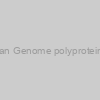 Recombinant Human Genome polyprotein, His, Yeast-100ug |
|
QP7370-ye-100ug |
EnQuireBio |
100ug |
EUR 576 |
 Recombinant Human Genome polyprotein, His, Yeast-200ug |
|
QP7370-ye-200ug |
EnQuireBio |
200ug |
EUR 892.8 |
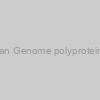 Recombinant Human Genome polyprotein, His, Yeast-500ug |
|
QP7370-ye-500ug |
EnQuireBio |
500ug |
EUR 1447.2 |
 Protein (aa 1-3412)) Recombinant YFV Genome polyprotein (NS4A) Protein (aa 1-3412) |
|
VAng-Cr6545-inquire |
Creative Biolabs |
inquire |
Ask for price |
|
Description: YFV (isolate Uganda/A7094A4/1948) Genome polyprotein (NS4A), recombinant protein. |
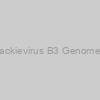 Recombinant Coxsackievirus B3 Genome polyprotein, partial |
|
CSB-EP361017CRM1 |
Cusabio |
8884 mg |
Ask for price |
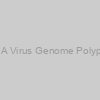 Equine Rhinitis A Virus Genome Polyprotein Antibody |
|
abx345840-100g |
Abbexa |
100 µg |
Ask for price |
 Equine Rhinitis A Virus Genome Polyprotein Antibody |
|
abx345840-20g |
Abbexa |
20 µg |
EUR 250 |
 Equine Rhinitis A Virus Genome Polyprotein Antibody |
|
abx345840-50g |
Abbexa |
50 µg |
EUR 350 |
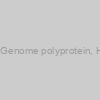 Recombinant Human Genome polyprotein, His-SUMO, E.coli-1mg |
|
QP7370-ec-1mg |
EnQuireBio |
1mg |
EUR 1958.4 |
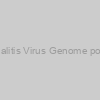 Japanese Encephalitis Virus Genome polyprotein Antibody |
|
abx345000-100l |
Abbexa |
100 µl |
EUR 350 |
 Japanese Encephalitis Virus Genome polyprotein Antibody |
|
abx345000-50l |
Abbexa |
50 µl |
EUR 250 |
 Recombinant Human rhinovirus 1A Genome polyprotein, partial |
|
CSB-YP326367HQA |
Cusabio |
6222 mg |
Ask for price |
 Recombinant Human rhinovirus 1A Genome polyprotein, partial |
|
CSB-EP326367HQA |
Cusabio |
11613 mg |
Ask for price |
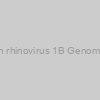 Recombinant Human rhinovirus 1B Genome polyprotein, partial |
|
CSB-EP320160HQB |
Cusabio |
10401 mg |
Ask for price |
 Recombinant Human rhinovirus 1A Genome polyprotein,partial |
|
AP72911 |
SAB |
each |
Ask for price |
|
|
 Recombinant Human rhinovirus 1A Genome polyprotein,partial |
|
RPC25135-100ug |
Biomatik Corporation |
100ug |
EUR 573.1 |
 Recombinant Human rhinovirus 1A Genome polyprotein,partial |
|
RPC25135-20ug |
Biomatik Corporation |
20ug |
EUR 288.8 |
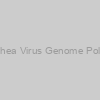 Bovine Viral Diarrhea Virus Genome Polyprotein Antibody |
|
abx345377-100tests |
Abbexa |
100 tests |
EUR 250 |
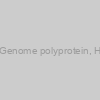 Recombinant Human Genome polyprotein, His-SUMO, E.coli-10ug |
|
QP7370-ec-10ug |
EnQuireBio |
10ug |
EUR 240 |
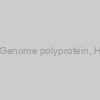 Recombinant Human Genome polyprotein, His-SUMO, E.coli-50ug |
|
QP7370-ec-50ug |
EnQuireBio |
50ug |
EUR 315.6 |
 Recombinant Human Genome polyprotein, His-SUMO, E.coli-100ug |
|
QP7370-ec-100ug |
EnQuireBio |
100ug |
EUR 489.6 |
 Recombinant Human Genome polyprotein, His-SUMO, E.coli-200ug |
|
QP7370-ec-200ug |
EnQuireBio |
200ug |
EUR 760.8 |
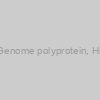 Recombinant Human Genome polyprotein, His-SUMO, E.coli-500ug |
|
QP7370-ec-500ug |
EnQuireBio |
500ug |
EUR 1272 |
 Recombinant Human parechovirus 2 Genome polyprotein, partial |
|
CSB-EP529147HXJ |
Cusabio |
9583 mg |
Ask for price |
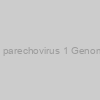 Recombinant Human parechovirus 1 Genome polyprotein, partial |
|
CSB-EP734409HCAV |
Cusabio |
9651 mg |
Ask for price |
) OPCA05394-20UG - GENOME POLYPROTEIN Recombinant Protein (isolate 1) |
|
OPCA05394-20UG |
Aviva Systems Biology |
20ug |
EUR 339 |
|
|
 Yellow Fever Virus |
|
yfv-001 |
ProSpec Tany |
100µg |
EUR 200 |
|
Description: Recombinant Yellow Fever Virus |
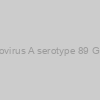 Recombinant Human rhinovirus A serotype 89 Genome polyprotein, partial |
|
CSB-YP362073HQD |
Cusabio |
6387 mg |
Ask for price |
 Recombinant Human rhinovirus A serotype 89 Genome polyprotein, partial |
|
CSB-EP362073HQD |
Cusabio |
3389 mg |
Ask for price |
 Recombinant Human rhinovirus A serotype 89 Genome polyprotein, partial |
|
CSB-EP362073HQDb0 |
Cusabio |
3390 mg |
Ask for price |
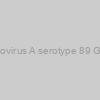 Recombinant Human rhinovirus A serotype 89 Genome polyprotein,partial |
|
AP71163 |
SAB |
1mg |
EUR 1978 |
|
|
 Recombinant Human rhinovirus A serotype 89 Genome polyprotein,partial |
|
AP72984 |
SAB |
each |
Ask for price |
|
|
 Recombinant Human rhinovirus A serotype 89 Genome polyprotein,partial |
|
AP77542 |
SAB |
1mg |
EUR 1978 |
|
|
 Recombinant Human rhinovirus A serotype 89 Genome polyprotein,partial |
|
RPC22779-100ug |
Biomatik Corporation |
100ug |
EUR 460.9 |
 Recombinant Human rhinovirus A serotype 89 Genome polyprotein,partial |
|
RPC22779-1mg |
Biomatik Corporation |
1mg |
EUR 2237.8 |
 Recombinant Human rhinovirus A serotype 89 Genome polyprotein,partial |
|
RPC22779-20ug |
Biomatik Corporation |
20ug |
EUR 258.7 |
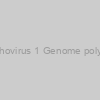 Recombinant Human parechovirus 1 Genome polyprotein, partial, Biotinylated |
|
CSB-EP734409HCAV-B |
Cusabio |
10800 mg |
Ask for price |
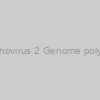 Recombinant Human parechovirus 2 Genome polyprotein, partial, Biotinylated |
|
CSB-EP897051HHAL-B |
Cusabio |
10843 mg |
Ask for price |
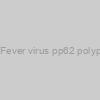 African Swine Fever virus pp62 polyprotein, His-tag |
|
REC31745-100 |
The Native Antigen Company |
0.1 |
EUR 755.24 |
|
Description: Recombinant African Swine Fever virus (ASFV) pp62 polyprotein expressed in mammalian cells and purified from cell pellets by immobilised metal affinity and ion exchange chromatography. This polyprotein is the precursor for structural proteins p15 and p35. |
 African Swine Fever virus pp62 polyprotein, His-tag |
|
REC31745-500 |
The Native Antigen Company |
0.5 |
EUR 2836 |
|
Description: Recombinant African Swine Fever virus (ASFV) pp62 polyprotein expressed in mammalian cells and purified from cell pellets by immobilised metal affinity and ion exchange chromatography. This polyprotein is the precursor for structural proteins p15 and p35. |
 Yellow Fever Virus NS1 protein (YFV-NS1, 780-1133 aa) (>95%, his-tag)) Recombinant (E.coli) Yellow Fever Virus NS1 protein (YFV-NS1, 780-1133 aa) (>95%, his-tag) |
|
YFVNS16-R-10 |
Alpha Diagnostics |
10 ug |
EUR 416.4 |
 Yellow Fever Virus NS1 protein (YFV-NS1/17D, 779-1136aa) (>95%, his-tag)) Recombinant (HEK) Yellow Fever Virus NS1 protein (YFV-NS1/17D, 779-1136aa) (>95%, his-tag) |
|
YFVNS15-R-10 |
Alpha Diagnostics |
10 ug |
EUR 416.4 |
 Yellow Fever Virus Env protein (YFV-Env/17D, 445aa) (>95%, his-tag)) Recombinant (E. coli) Yellow Fever Virus Env protein (YFV-Env/17D, 445aa) (>95%, his-tag) |
|
YFVEN16-R-10 |
Alpha Diagnostics |
10 ug |
EUR 416.4 |
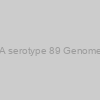 Recombinant Human rhinovirus A serotype 89 Genome polyprotein, partial, Biotinylated |
|
CSB-EP362073HQD-B |
Cusabio |
7058 mg |
Ask for price |
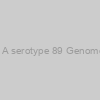 Recombinant Human rhinovirus A serotype 89 Genome polyprotein,partial,Biotinylated |
|
RPC27677-100ug |
Biomatik Corporation |
100ug |
EUR 614.3 |
 Recombinant Human rhinovirus A serotype 89 Genome polyprotein,partial,Biotinylated |
|
RPC27677-1mg |
Biomatik Corporation |
1mg |
EUR 2373.6 |
 Recombinant Human rhinovirus A serotype 89 Genome polyprotein,partial,Biotinylated |
|
RPC27677-20ug |
Biomatik Corporation |
20ug |
EUR 468 |
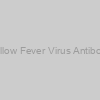 Yellow Fever Virus Antibody |
|
GWB-9FB9EA |
GenWay Biotech |
0.1 ml |
Ask for price |
 Yellow Fever Virus Antibody |
|
GWB-BF3E7B |
GenWay Biotech |
0.1 mg |
Ask for price |
 Protein) Virus Yellow Fever Virus (YFV) Protein |
|
abx670277-100ug |
Abbexa |
100 ug |
EUR 644.4 |
|
|
 Yellow Fever Virus Env protein (YFV-Env/17D) Western blot +ve control) Recombinant (E. coli) Yellow Fever Virus Env protein (YFV-Env/17D) Western blot +ve control |
|
YFVEN16-C |
Alpha Diagnostics |
100 ul |
EUR 343.2 |
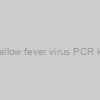 Yellow fever virus PCR kit |
|
PCR-H627-48D |
Bioingentech |
50T |
EUR 543.6 |
 Yellow fever virus PCR kit |
|
PCR-H627-96D |
Bioingentech |
100T |
EUR 686.4 |
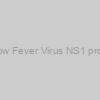 Yellow Fever Virus NS1 protein |
|
80-1547 |
Fitzgerald |
500 ug |
EUR 550 |
|
|
|
Description: Purified Recombinant Yellow Fever Virus NS1 protein (His tag) |
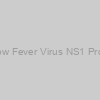 Yellow Fever Virus NS1 Protein |
|
YFV-NS1-100 |
The Native Antigen Company |
0.1 |
EUR 318.94 |
|
Description: Recombinant Yellow Fever Virus NS1 antigen produced in 293 human cells. Protein contains a C-terminal His-tag. |
 Yellow Fever Virus NS1 Protein |
|
YFV-NS1-500 |
The Native Antigen Company |
0.5 |
EUR 1371.44 |
|
Description: Recombinant Yellow Fever Virus NS1 protein produced in 293 human cells. Protein contains a C-terminal His-tag. |
 Antibody) Yellow Fever Virus (YFV) Antibody |
|
abx411683-01ml |
Abbexa |
0.1 ml |
EUR 610.8 |
|
|
 Antibody) Yellow Fever Virus (YFV) Antibody |
|
abx415761-01mg |
Abbexa |
0.1 mg |
EUR 710.4 |
|
|
 Antibody) Yellow Fever Virus (YFV) Antibody |
|
abx411683-100tests |
Abbexa |
100 tests |
EUR 425 |
 Antibody) Yellow Fever Virus (YFV) Antibody |
|
abx415761-200l |
Abbexa |
200 µl |
EUR 737.5 |
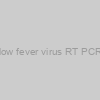 Yellow fever virus RT PCR kit |
|
RTq-H627-100D |
Bioingentech |
100T |
EUR 860.4 |
 Yellow fever virus RT PCR kit |
|
RTq-H627-150D |
Bioingentech |
150T |
EUR 969.6 |
 Yellow fever virus RT PCR kit |
|
RTq-H627-50D |
Bioingentech |
50T |
EUR 717.6 |
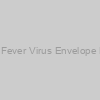 Yellow Fever Virus Envelope Protein |
|
abx620002-100g |
Abbexa |
100 µg |
EUR 1875 |
 Yellow Fever Virus Envelope Protein |
|
abx620002-200g |
Abbexa |
200 µg |
EUR 5325 |
 Yellow Fever Virus Envelope Protein |
|
abx620002-50g |
Abbexa |
50 µg |
EUR 1000 |
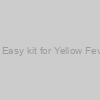 genesig Easy kit for Yellow Fever Virus |
|
Z-Path-YFV-EASY |
Novacyt Group |
50 tests |
EUR 410 |
|
Description: YFV |
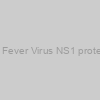 Yellow Fever Virus NS1 protein[His] |
|
DAGA-412 |
Creative Diagnostics |
100 ug |
EUR 824.25 |
|
|
|
Description: Recombinant |
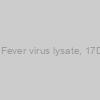 Yellow Fever virus lysate, 17D strain |
|
NAT41563-100 |
The Native Antigen Company |
0.1 |
EUR 512.85 |
|
Description: Purified yellow fever virus Lysate (17D strain). |
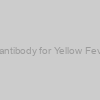 Mouse antibody for Yellow Fever virus |
|
3576 |
Virostat |
100 ug |
EUR 425.4 |
|
Description: This is purified Mouse monoclonal antibody against Yellow Fever virus for WB, ELISA. |
 Yellow Fever virus lysate, Asibi strain |
|
NAT41562-100 |
The Native Antigen Company |
0.1 |
EUR 391.66 |
|
Description: Purified yellow fever virus Lysate (Asibi strain). |
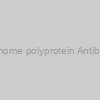 Genome polyprotein Antibody |
|
20-abx300967 |
Abbexa |
-
Ask for price
-
Ask for price
-
Ask for price
-
Ask for price
-
Ask for price
|
- 100 ug
- 1 mg
- 200 ug
- 20 ug
- 50 ug
|
|
|
 Genome polyprotein Antibody |
|
1-CSB-PA18549A0Rb |
Cusabio |
-
Ask for price
-
Ask for price
|
|
|
|
|
Description: A polyclonal antibody against Genome polyprotein. Recognizes Genome polyprotein from Dengue virus. This antibody is Unconjugated. Tested in the following application: ELISA |
 Genome polyprotein Antibody |
|
1-CSB-PA333180LA01HFD |
Cusabio |
-
Ask for price
-
Ask for price
|
|
|
|
|
Description: A polyclonal antibody against Genome polyprotein. Recognizes Genome polyprotein from Hepatitis C virus genotype 1a. This antibody is Unconjugated. Tested in the following application: ELISA |
 Genome polyprotein Antibody |
|
1-CSB-PA362073LA01HQD |
Cusabio |
-
Ask for price
-
Ask for price
|
|
|
|
|
Description: A polyclonal antibody against Genome polyprotein. Recognizes Genome polyprotein from Human rhinovirus A serotype 89. This antibody is Unconjugated. Tested in the following application: ELISA |
 Genome polyprotein Antibody |
|
CSB-PA4643XA11GSV |
Cusabio |
100ul / 50ul |
EUR 299 |
|
|
|
Description: Genome polyprotein |
 Genome polyprotein Antibody |
|
CSB-PA4644XA11GSW |
Cusabio |
100ul / 50ul |
EUR 299 |
|
|
|
Description: Genome polyprotein |
 Genome polyprotein Antibody |
|
1-CSB-PA714772LA01HYH |
Cusabio |
-
Ask for price
-
Ask for price
|
|
|
|
|
Description: A polyclonal antibody against Genome polyprotein. Recognizes Genome polyprotein from Human enterovirus 71. This antibody is Unconjugated. Tested in the following application: ELISA |
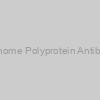 Genome Polyprotein Antibody |
|
20-abx109417 |
Abbexa |
-
Ask for price
-
Ask for price
-
Ask for price
-
Ask for price
-
Ask for price
|
- 100 ug
- 1 mg
- 200 ug
- 20 ug
- 50 ug
|
|
|
 Genome polyprotein Antibody |
|
abx300967-100g |
Abbexa |
100 µg |
EUR 362.5 |
 Genome polyprotein Antibody |
|
abx300967-20g |
Abbexa |
20 µg |
EUR 162.5 |
 Genome polyprotein Antibody |
|
abx300967-50g |
Abbexa |
50 µg |
EUR 250 |
 Genome Polyprotein Antibody |
|
abx109417-100l |
Abbexa |
100 µl |
EUR 162.5 |
 polyprotein, His, Yeast-1mg) Recombinant Hepatitis C virus genotype 1b (strain HC-J4) polyprotein, His, Yeast-1mg |
|
QP9739-ye-1mg |
EnQuireBio |
1mg |
EUR 3296.4 |
) Recombinant Hepatitis E virus genotype 1 Non-structural polyprotein pORF1 (ORF1) |
|
AP71039 |
SAB |
1mg |
EUR 2826 |
|
|
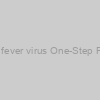 Yellow fever virus One-Step PCR kit |
|
Oneq-H627-100D |
Bioingentech |
100T |
EUR 1039.2 |
 Yellow fever virus One-Step PCR kit |
|
Oneq-H627-150D |
Bioingentech |
150T |
EUR 1177.2 |
 Yellow fever virus One-Step PCR kit |
|
Oneq-H627-50D |
Bioingentech |
50T |
EUR 861.6 |
 polyprotein, His, Yeast-100ug) Recombinant Hepatitis C virus genotype 1b (strain HC-J4) polyprotein, His, Yeast-100ug |
|
QP9739-ye-100ug |
EnQuireBio |
100ug |
EUR 945.6 |
Higher metabolic potentials have been additionally noticed in the degradation of fragrant compounds, chitin, cellulose, and hemicellulose at larger elevations. Only one phytate degradation gene and one nitrate discount gene have been enriched in the high-elevation lakes.
Furthermore, the enhanced interactions and complexity amongst the co-occurring purposeful genes in microbial communities of lakes at excessive elevations have been revealed in phrases of community dimension, hyperlinks, connectivity, and clustering coefficients, and there have been extra purposeful genes of stress responses mediating the module hub of this community. The findings of this research spotlight the well-developed purposeful methods utilized by aquatic microbial communities to stand up to the harsh circumstances at excessive elevations.

